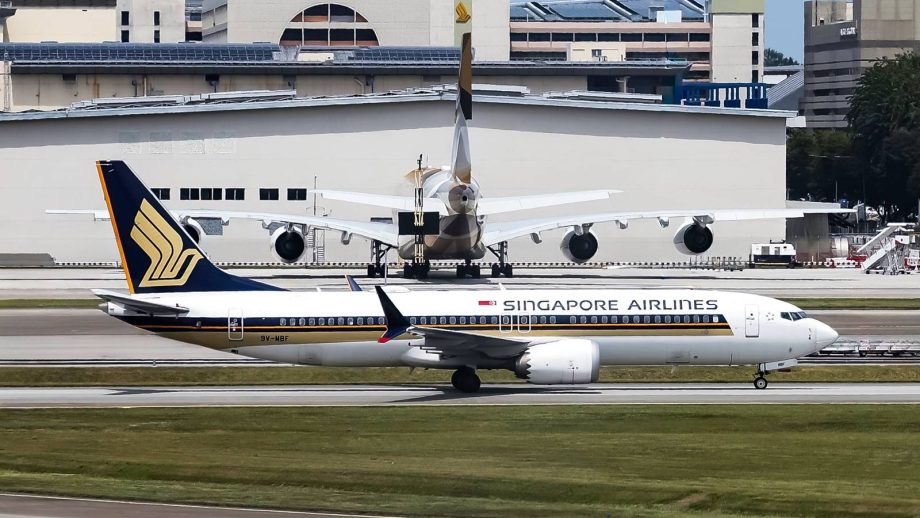![]() Singapore Airlines Group has reported a fall in profits over the first half of FY2025, driven by losses at Indian national carrier Air India, in which SIA Group holds a 25% stake. The company also cited lower interest income and stronger competition driving down yields, which led to a year-on-year drop in net profit from $742 million to $239 million, representing a 67% reduction.
Singapore Airlines Group has reported a fall in profits over the first half of FY2025, driven by losses at Indian national carrier Air India, in which SIA Group holds a 25% stake. The company also cited lower interest income and stronger competition driving down yields, which led to a year-on-year drop in net profit from $742 million to $239 million, representing a 67% reduction.
The airline began accounting for Air India’s earnings in its own results after Vistara, in which SIA held a 49% stake, was merged into Air India in late 2024.
Singapore Half-Year Net Profits Down
As per the airline group’s half-year earnings report for FY2025, despite posting a robust operating profit of $803 million, its net profit dropped by 67.8% to $239 million. Net profit for Q2 2025 saw an even sharper decline, dropping by $238 million to $52 million, an 82.1% decrease. SIA and its subsidiary Scoot carried 20.8 million passengers in the first half, up 8% year-on-year, with an overall load factor of 87.7%.
Year-on-year, its share of results of associated companies was $417 million lower, with loss-making Air India’s results included this year but not previously, as SIA Group only began accounting for Air India in December 2024 following Vistara’s full integration. Of these losses, $295 million was recorded in the second quarter, while the company also cited $103 million in lower interest income.
The airline said,
“Despite the ongoing challenges, the SIA Group remains committed to working with its partner Tata Sons to support Air India’s comprehensive multi-year transformation programme.”
Strong Demand But Weakening Yields
On paper, it was still a strong performance from Singapore Airlines, which posted a record first-half revenue of $9.675 billion, a 1.9% year-on-year increase. However, due to stronger competition on routes, the company saw its yields dip by 3% year-on-year, despite lower fuel costs.
Revenue from the group’s cargo division also dropped year-on-year by almost 2%, despite a small 1.2% rise in cargo load. However, this fell short of the airline’s 2.8% expansion of cargo capacity, leading to lower yields. SIA Group said the cargo market remains “uncertain” as airlines shift capacity away from the United States to other markets.
SIA Group has continued to strengthen its relationships with other airlines in the Asia-Pacific market. This includes an expanded agreement with Garuda Indonesia signed in August, as well as a codeshare agreement with Vietnam Airlines announced in September.
Air India Challenges Not Going Anywhere
Backed by Tata Group and SIA Group, Air India remains in the midst of an ambitious transformation, but has faced enhanced regulatory scrutiny and public criticism, notably in the aftermath of Air India Flight 171 in June. A subsequent audit by Indian regulator DGCA found over 50 safety violations, of which seven were categorized as the most severe.
Financially, the carrier continues to make heavy losses, posting a loss of $1.15 billion for FY2025. However, Lorraine Tan, director of equity research at Morningstar, told CNBC that more clarity is needed on Air India’s recent losses, as much of it could be attributed to ramping up its fleet. Tan noted that if the losses are primarily due to this, “and thus depreciation driven, Air India may be at EBITDA breakeven, and if so, that’s fine.”
|
Aircraft Type |
Total |
Avg. Age |
|---|---|---|
|
Airbus A319-100 |
6 |
17.2 Years |
|
Airbus A320-200 |
4 |
15.8 Years |
|
Airbus A320neo |
94 |
5.2 Years |
|
Airbus A321-200 |
13 |
16.6 Years |
|
Airbus A321neo |
10 |
3.6 Years |
|
Airbus A350-900 |
6 |
2.1 Years |
|
Boeing 777-200 |
3 |
16.6 Years |
|
Boeing 777-300ER |
19 |
15.0 Years |
|
Boeing 787-8 |
26 |
11.3 Years |
|
Boeing 787-9 |
6 |
4.7 Years |
Recent reports have also suggested that Air India is pursuing financial assistance from Tata and SIA Group to the tune of over $1 billion. This funding would reportedly be allocated towards improving maintenance capabilities and implementing system upgrades.









